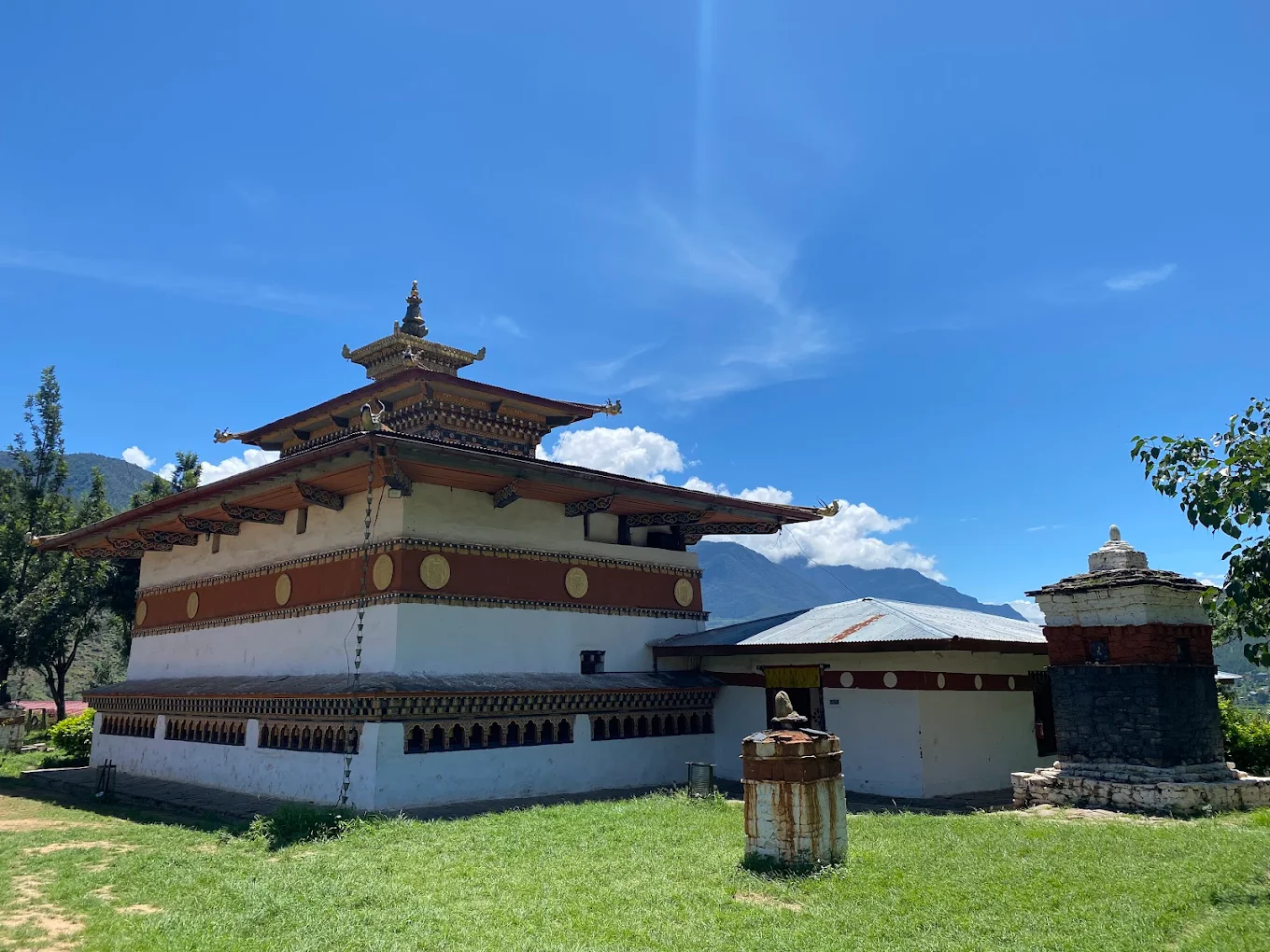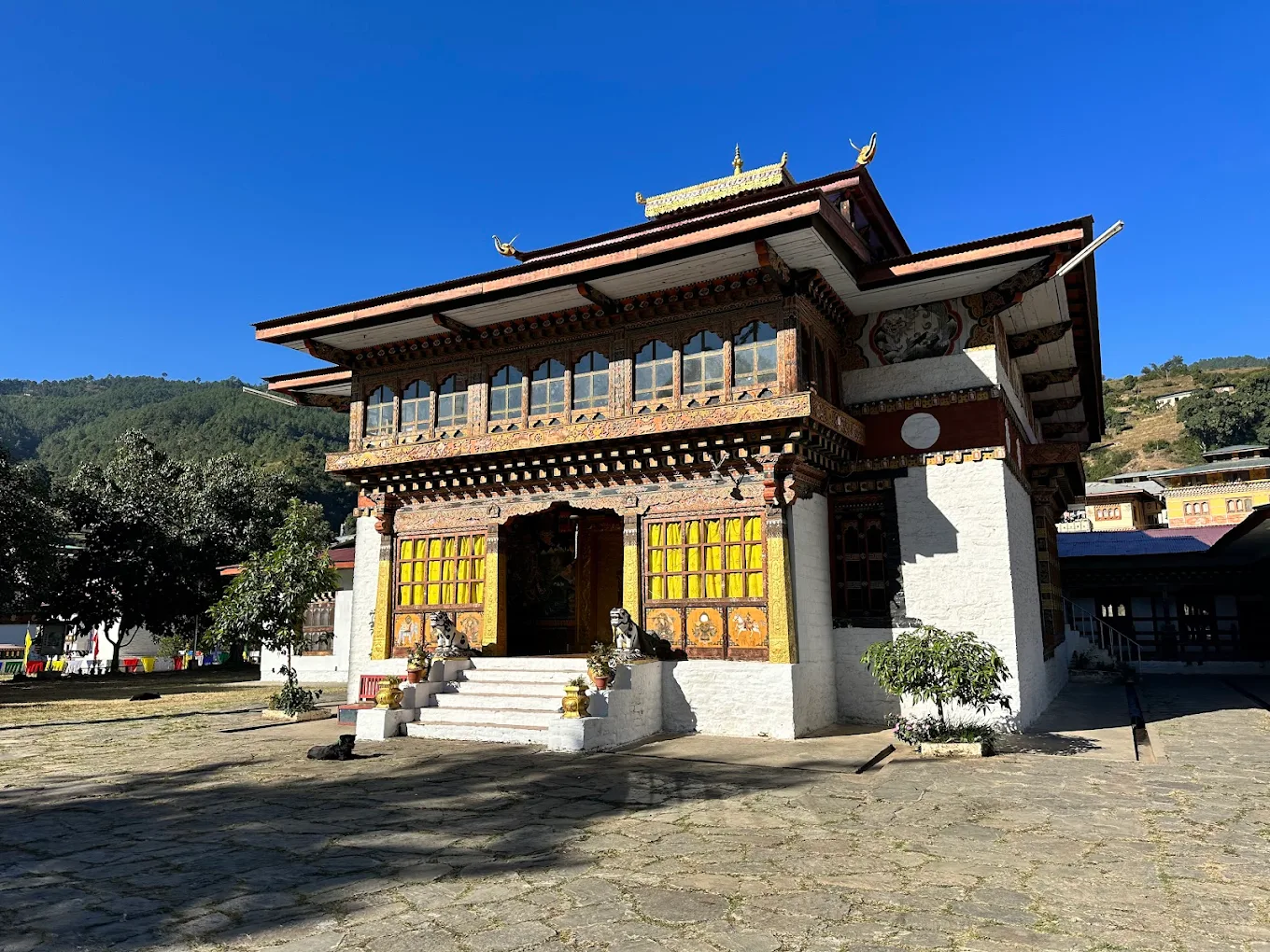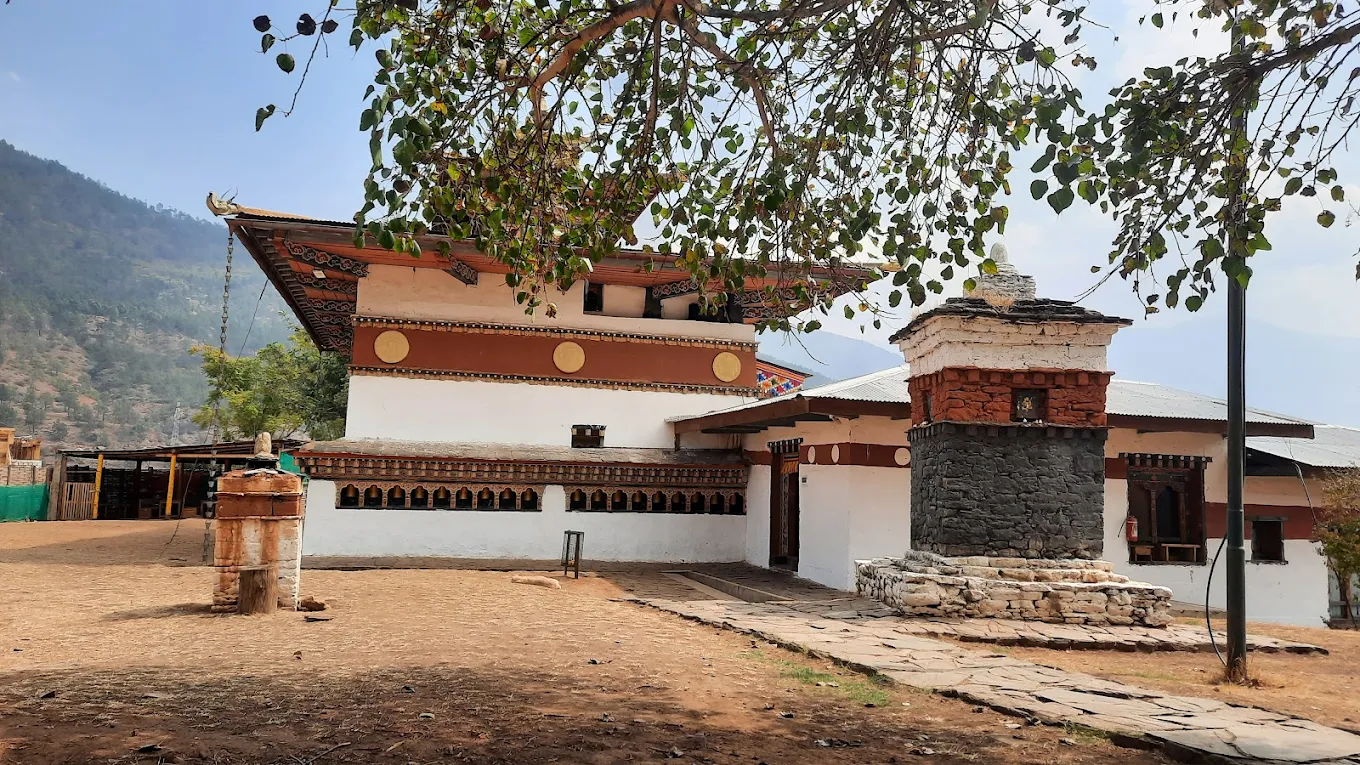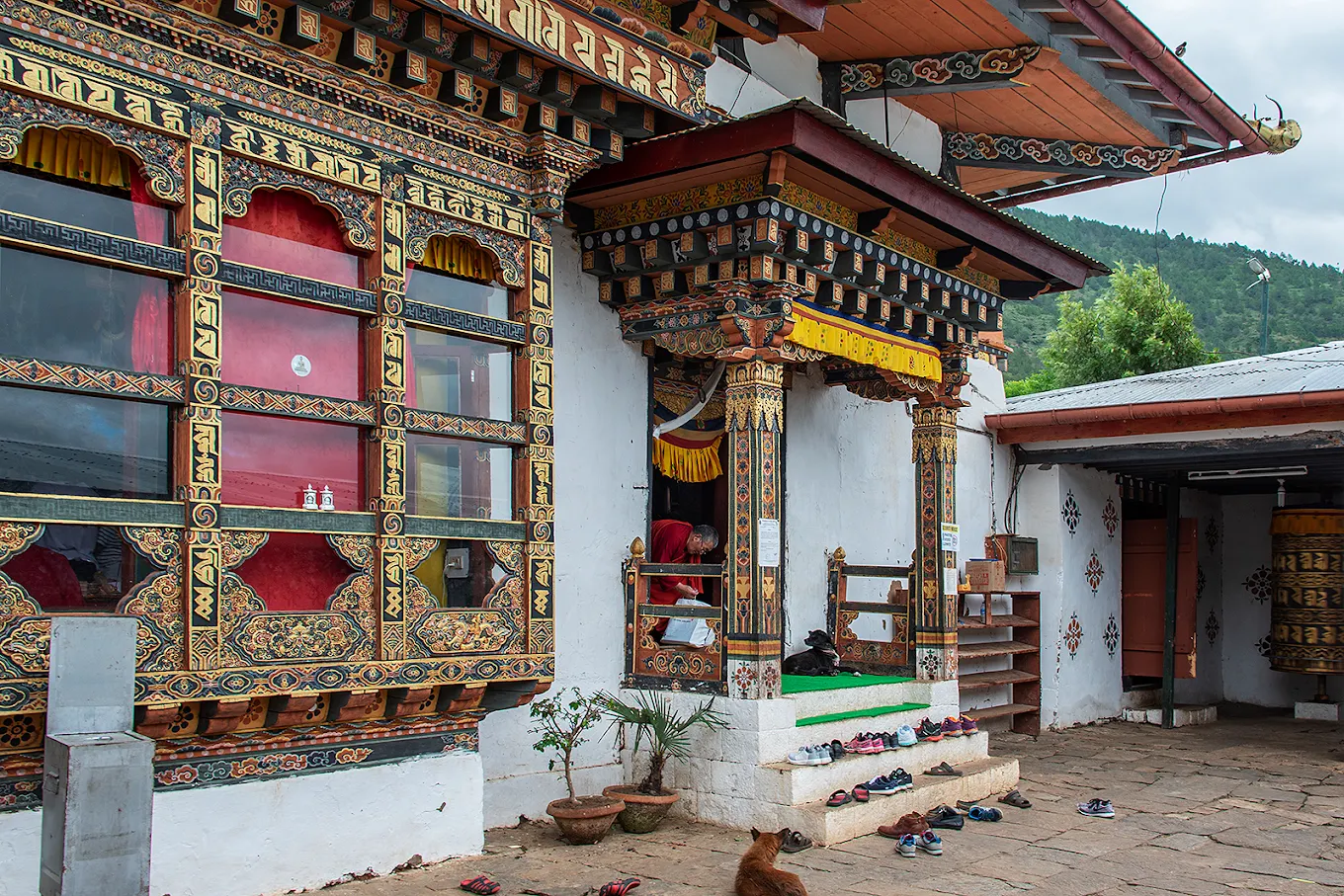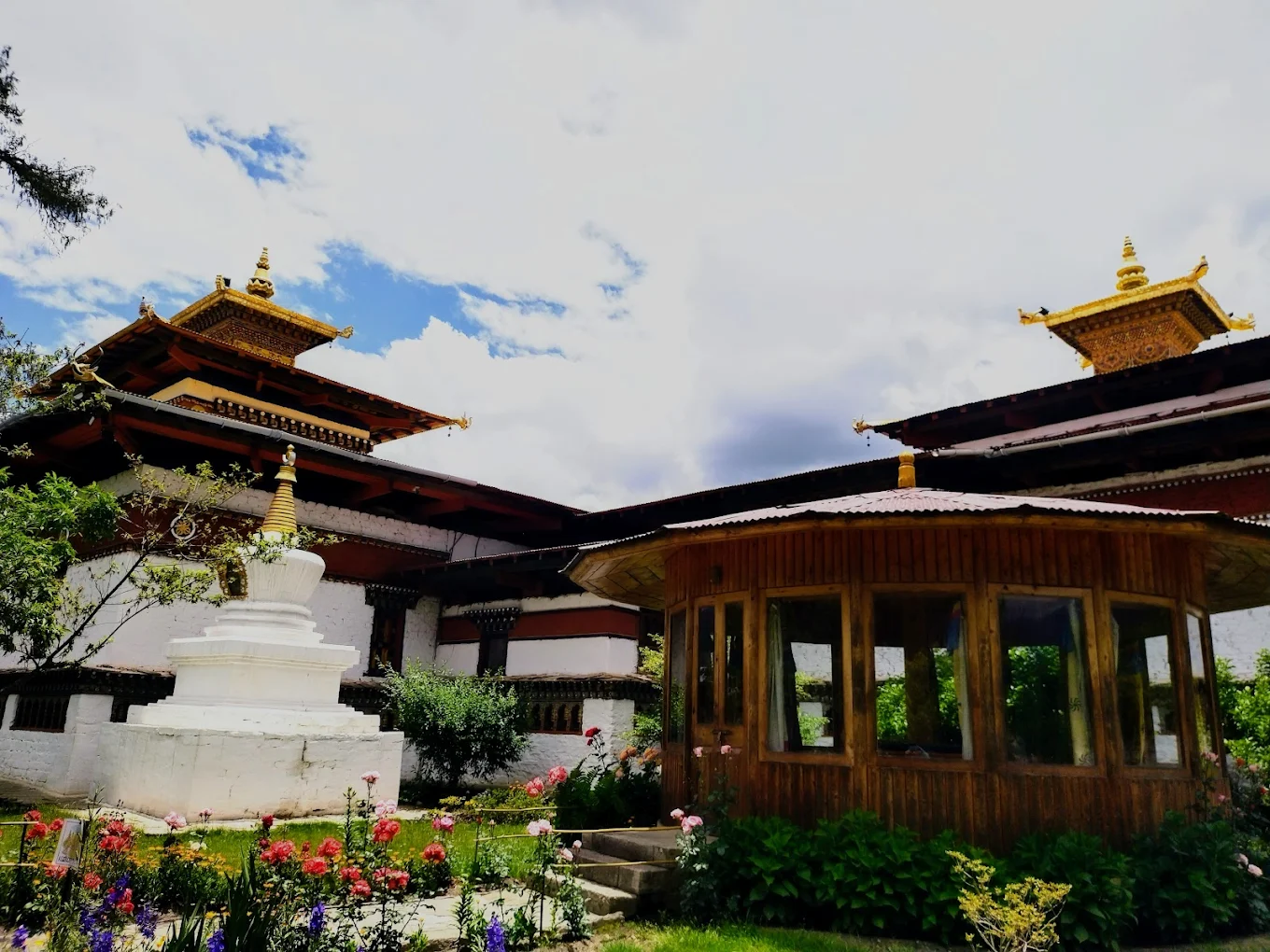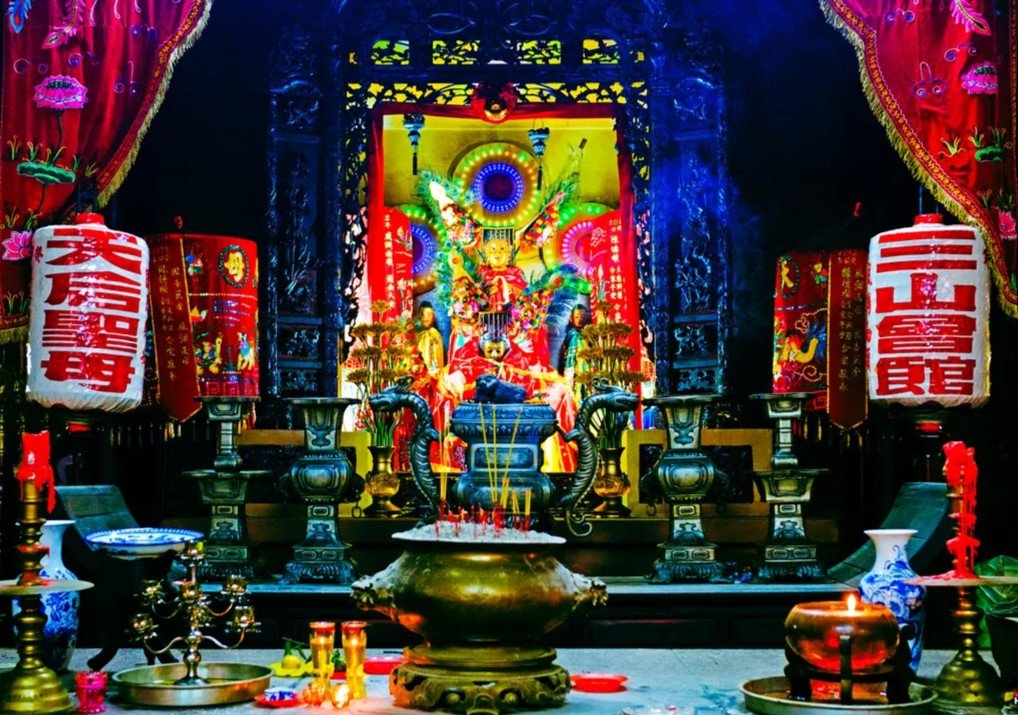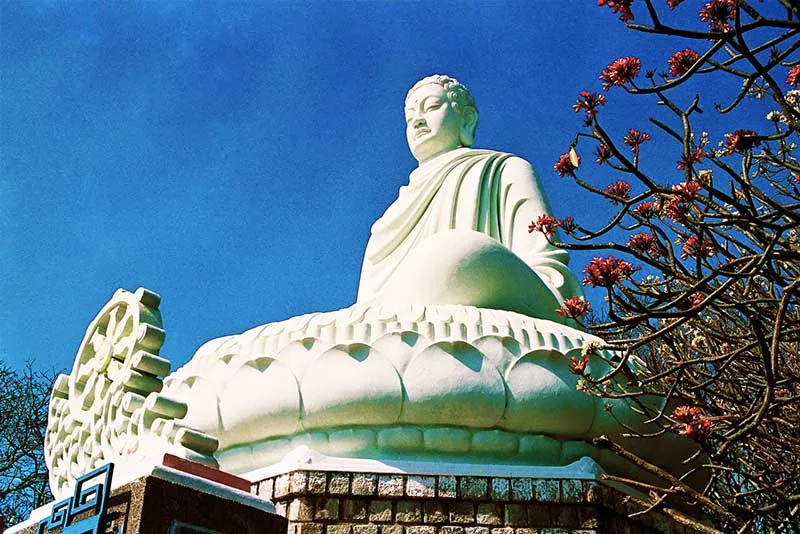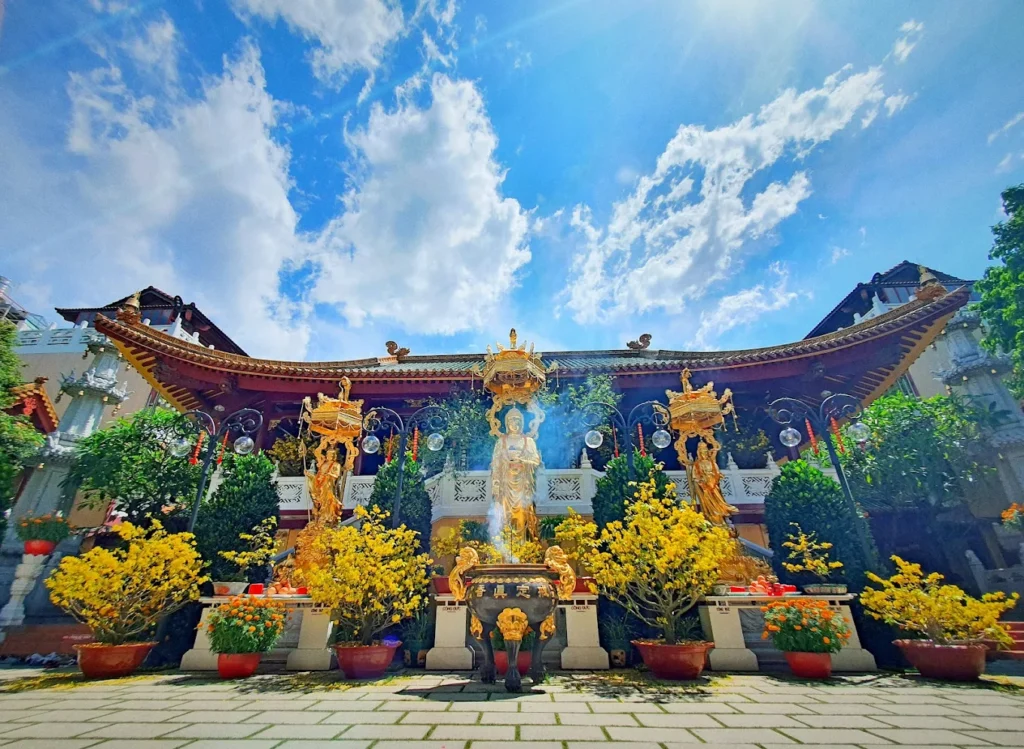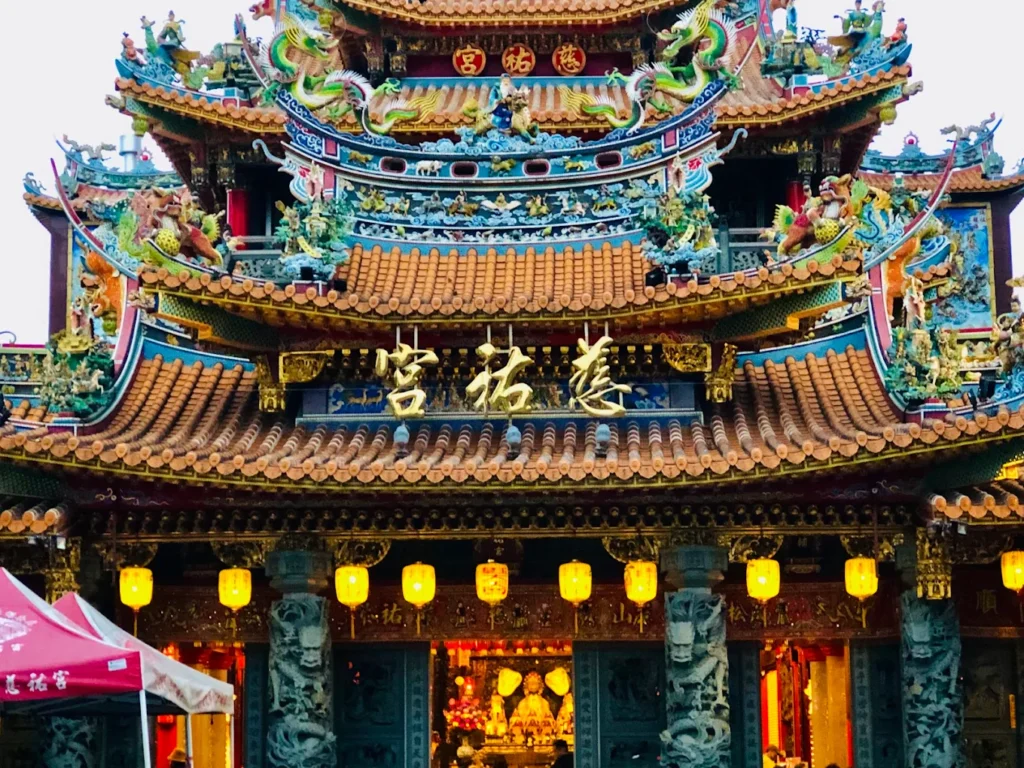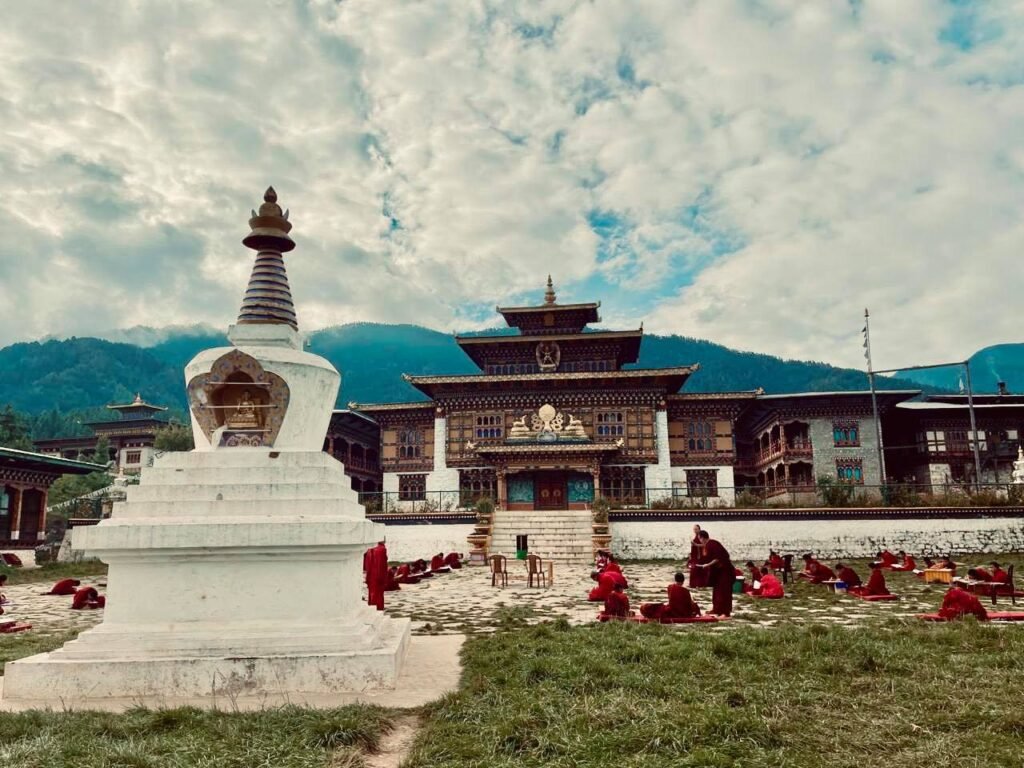Chimi Lhakhang: The Blessed Sanctuary of Fertility in Punakha’s Drukpa Kagyu Heart
Nestled serenely on a gentle hillock in the fertile Punakha Valley, where the morning sun casts a warm glow over fields of rice and mustard, Chimi Lhakhang stands as a beacon of spiritual joy, its white walls adorned with prayer flags. Within the sacred main temple (lhakhang), families offer prayers before a wooden statue of Lama Drukpa Kunley, the “Divine Madman,” as monks chant the Om Mani Padme Hum mantra to bless those seeking fertility. Established in 1499 by Ngawang Choegyal, the cousin of Drukpa Kunley, this Drukpa Kagyu sanctuary has become a pilgrimage site renowned for its unique association with fertility blessings. The air carries the scent of juniper incense, lit to honor the lama’s legacy, while the surrounding village of Sopsokha hums with devotion. From its hilltop perch, Punakha Dzongkhag unfolds below, connecting the lhakhang to Bhutan’s spiritual and cultural soul. This sacred haven invites travelers, seekers, and scholars to ascend its paths and immerse themselves in the joyful essence of Drukpa Kagyu blessings.
Whispers of Fertility: Overview and Significance
Introduction to Chimi Lhakhang
Chimi Lhakhang, perched on a hillock in Punakha Dzongkhag, Bhutan, stands as a revered Drukpa Kagyu sanctuary, celebrated for its role as a pilgrimage site for fertility blessings and its connection to Lama Drukpa Kunley, the “Divine Madman.” A short walk from the village of Sopsokha reveals a tranquil retreat where the rustle of fields and the sound of prayers create a peaceful ambiance. Known as Chime Lhakhang or Chimi Lhakhang Temple, it embodies Bhutan’s spiritual heritage, blending meditation with the joyous tradition of granting children. A cultural and sacred gem, the lhakhang weaves history, fertility, and Himalayan reverence into a timeless refuge.
Historical Journey
Chimi Lhakhang was founded in 1499 by Ngawang Choegyal, the cousin of Lama Drukpa Kunley, following the lama’s subjugation of a demoness at the site, marked by a chorten. Drukpa Kunley, arriving from Tibet in the late 15th century, blessed the area with his unorthodox methods, leaving a legacy of fertility prayers. The original structure was a small temple, later expanded in the 18th century with community support, and restored in the 1990s to preserve its spiritual role. These efforts have maintained its sanctity as a pilgrimage destination, reflecting Bhutanese devotion to Drukpa Kunley’s teachings.
Cultural Significance
- Drukpa Kagyu Devotion: Rooted in the Drukpa Kagyu lineage, the lhakhang venerates Lama Drukpa Kunley and Chenrezig, emphasizing compassion and unconventional wisdom.
- Bhutanese Heritage: A spiritual anchor, it preserves rituals like fertility blessings and mantra recitation, reflecting national identity and humor.
- Fertility Legacy: Its association with childbirth blessings shapes family and community life.
- Regional Influence: Pilgrimages draw devotees from Punakha and central Bhutan, fostering unity.
Unique Legacy
- Fertility Shrine: The wooden statue of Drukpa Kunley anchors its blessing tradition, a verified cultural marvel.
- Hillock Serenity: Its elevated perch enhances meditative focus, distinct among Punakha’s sites.
- Historical Endurance: Founded in 1499, it reflects Bhutanese resilience.
- Cultural Symbol: Drukpa Kunley’s legacy mirrors Bhutan’s blend of spirituality and humor.
Community and Global Impact
- Local Devotion: The lhakhang hosts blessings and festivals, strengthening Punakha’s Buddhist ties.
- Pilgrimage Hub: Thousands visit annually, drawn by its fertility reputation and scenic beauty.
- Global Appeal: International families and meditators seek its unique blessings.
- Cultural Dialogue: Shared rituals unite Bhutanese and global visitors, fostering understanding.
Modern Relevance
- Spiritual Retreat: Chimi Lhakhang offers a haven for mindfulness with its joyful tradition.
- Cultural Preservation: It safeguards Drukpa Kagyu practices, ensuring Bhutan’s heritage thrives.
- Fertility Influence: Its blessings inspire global seekers of family harmony.
Historical Anecdotes
- Drukpa Kunley’s Triumph: His subjugation of the demoness in the 15th century sanctified the site.
- Ngawang’s Founding: The 1499 construction honored his cousin’s legacy.
- Blessing Tales: Stories of successful fertility prayers enhance its fame.
Social Role
- Community Hub: Blessings and festivals unite Punakha’s Buddhists.
- Fertility Center: Monks guide families in childbirth rites.
- Charitable Spirit: Communal gatherings reflect Drukpa Kagyu compassion.
Artistic Influence
- Thangka Art: Simple murals of Drukpa Kunley inspire Bhutanese artists.
- Cultural Icon: The hilltop view graces local imagery.
- Festival Art: Phallic symbols on houses showcase Bhutanese humor.
Chimi Lhakhang’s hillock perch, where Lama Drukpa Kunley once tamed a demoness, weaves a narrative of devotion and fertility that defines Bhutan’s Drukpa Kagyu legacy. From its 1499 founding to its role as a blessing site, the lhakhang’s history pulses with the joy of Drukpa Kunley’s teachings, uniting monks and families. Its sacred halls and scenic trails set the stage for an architectural tapestry that mirrors its Himalayan soul. As we delve into its physical and spiritual features, Chimi Lhakhang’s design reveals how its gentle beauty nurtures profound faith and family blessings.
Crafted by the Hillock: Architectural and Spiritual Features
Iconic Design
Chimi Lhakhang’s architecture blends Drukpa Kagyu simplicity with its hillock setting, creating a sanctuary that harmonizes with Punakha’s fertile landscape. Whitewashed stone walls and wooden roofs, adorned with prayer flags, rise from the 1,500-meter elevation, reflecting Buddhist humility. The single-story layout, centered on the main lhakhang, prioritizes ceremonial function, with courtyards fostering community. Its perch above the Punakha Valley, overlooking Sopsokha village, amplifies its sacred resonance, tying the lhakhang to Bhutan’s Himalayan ethos.
Key Structures
- Main Lhakhang: The spiritual core, housing Drukpa Kunley’s statue, built in 1499.
- Chorten Courtyard: A stone chorten marks the demoness subjugation site, surrounded by prayer wheels.
- Monk Quarters: Small residential areas for monks, expanded in the 18th century.
- Prayer Flag Poles: Tall structures strung with flags, dotting the hillock.
- Offering Area: A space for fertility blessings, near the entrance.
Worshipped Statues
- Lama Drukpa Kunley: A wooden statue, symbolizing humor and fertility, radiates spiritual joy.
- Chenrezig (Avalokitesvara): A white stone statue, representing compassion, flanks the altar.
- Guru Rinpoche (Padmasambhava): A gilt statue, embodying guidance, stands prominently.
- Spiritual Role: Families offer butter lamps to Drukpa Kunley, seeking fertility blessings.
Materials and Techniques
- Construction: Local stone and timber, joined with Bhutanese methods, ensure durability.
- Artistry: Simple murals and phallic wood carvings, crafted by Punakha artisans, reflect Drukpa Kunley’s style.
- Cultural Essence: The design prioritizes ceremonial simplicity, distinct from dzong complexity.
Signature Elements
- Fertility Statue: Drukpa Kunley’s wooden figure anchors the blessing tradition.
- Chorten Marker: The demoness chorten symbolizes spiritual victory.
- Prayer Flags: Fluttering flags carry blessings across the valley.
Lesser-Known Features
- Ancient Murals: Faded paintings depict Drukpa Kunley’s life in the lhakhang.
- Hidden Niche: A small recess with fertility relics, linked to early blessings.
- Old Prayer Wheel: A weathered mani wheel, in use since the 16th century.
Preservation Efforts
- Restoration (1990s): Community efforts rebuilt the lhakhang, preserving original design.
- Challenges: Weather erosion affects stonework, requiring care.
- Modern Additions: Solar lights enhance evening accessibility.
Environmental Integration
- Hillock Harmony: The lhakhang’s design respects Punakha’s agricultural ecosystem.
- Eco-Practices: Monks maintain trails and protect fields.
- Wildlife Haven: Birds nest nearby, enhancing serenity.
Artisan Narratives
- Mural Painters: Punakha artists restored simple decorations, preserving art.
- Wood Carvers: Local craftsmen crafted phallic symbols, blending tradition.
- Flag Weavers: Nuns crafted prayer flags, embedding blessings.
Symbolic Details
- Prayer Flags: Five colors balance elements, spreading dharma.
- Chorten: Represents the demoness’s defeat, guiding blessings.
- Statues: Reflect Drukpa Kunley’s humor and compassion.
Landscape Integration
- Hillock Perch: Enhances ceremonial and meditative focus.
- Valley Views: The Punakha expanse mirrors inner joy.
- Rice Fields: Provide solitude and spiritual resonance.
Chimi Lhakhang’s stone lhakhang and sacred courtyards, nestled above Punakha’s fields, are more than architectural marvels; they are sanctuaries for the Drukpa Kagyu practices that define its joyful soul. The statue of Drukpa Kunley, illuminated by butter lamps, anchors rituals that connect families to Bhutan’s spiritual lineage. These hallowed spaces, alive with chants and blessings, invite visitors to engage with the lhakhang’s living traditions. As we explore its rituals, Chimi Lhakhang’s role as a meditative and fertility retreat comes to life, guiding devotees toward family harmony and enlightenment.
Rites of the Divine Madman: Rituals and Practices
Daily Sacred Rites
- Morning Chanting: Monks recite the Om Mani Padme Hum mantra at dawn, fostering compassion.
- Meditation Sessions: Silent meditation, held twice daily, centers on Mahamudra practices.
- Butter Lamp Offerings: Families light lamps before Drukpa Kunley, praying for fertility.
Unique Practices
- Fertility Blessings: Monks use a wooden phallus to bless couples, a Drukpa Kunley tradition.
- Demoness Commemoration: Rituals honor the chorten, marking the demoness’s defeat.
- Signature Ritual: Offering khata scarves to Drukpa Kunley, tied to his legacy.
Festival Traditions
- Chimi Tshechu (date unspecified): A local festival with cham dances and blessings.
- Lhabab Duchen: Ceremonies honor the Buddha’s descent, with chorten circuits.
- Losar (Bhutanese New Year): Monks perform purification rites, blessing visitors.
- Statue Veneration: Drukpa Kunley’s statue is adorned with offerings during festivals.
Visitor Engagement
- Accessible Rituals: Visitors can join chants or receive blessings, guided by monks.
- Offerings: Butter lamps and prayer flags, available at the lhakhang, invite participation.
- Drukpa Etiquette: Bow before statues and maintain respect during blessings.
Spiritual Community Roles
- Monastics: Around 10–15 monks lead rituals and guide blessings.
- Lamas: Senior monks perform fertility rites, honoring Drukpa Kunley.
- Lay Devotees: Sopsokha villagers maintain grounds and offer supplies.
Interfaith Connections
- Syncretic Practices: Some blend Drukpa rites with local folk traditions, honoring spirits.
- Outreach: Festivals welcome diverse faiths, fostering unity.
- Education: Monks share Drukpa Kunley’s teachings with visitors.
Ritual Symbolism
- Butter Lamps: Represent wisdom nurturing life.
- Phallus Symbol: Symbolizes fertility and humor, unique to Drukpa Kunley.
- Cham Dances: Enact spiritual joy and protection.
Seasonal Variations
- Spring Rites: Vibrant with mustard blooms, ideal for Chimi Tshechu.
- Winter Blessings: Cold enhances family gathering focus.
- Monsoon Chants: Rain amplifies mantra resonance.
Monastic Life
- Daily Routine: Monks rise at 5:00 AM for chants, meditation, and blessings.
- Community Service: Monks guide pilgrims and maintain the lhakhang.
- Training Hub: Monks learn Drukpa Kagyu practices, supporting Punakha’s faith.
Chimi Lhakhang’s rituals, from the Om Mani Padme Hum mantra to fertility blessings, breathe life into its hillock sanctuary, connecting families to the Drukpa Kagyu lineage. The lhakhang’s joyful practices, rooted in Bhutan’s spiritual faith, invite visitors to engage with its blessed heart, whether through chants or blessing ceremonies. For travelers, these rites offer a glimpse into Punakha’s sacred traditions, accessible within its village setting. As we turn to visitor information, Chimi Lhakhang’s hillock perch guides practical planning, ensuring a meaningful journey to this fertile retreat.
Journey to the Blessing Hill: Visitor Information
Navigating to Chimi Lhakhang
- Location: Punakha Dzongkhag, 1,500 meters, accessible via a trail from Sopsokha village, 7.5 km from Punakha town.
- Landmarks: Near the Punakha-Sopsokha road and rice fields, with Dzongkha and English signs.
- Routes: Walk from Sopsokha (15–20 minutes) or drive to the village base.
Address of Chimi Lhakhang
- Dzongkha: Chimi Lhakhang, Punakha Dzongkhag, Bhutan.
- English: Chimi Lhakhang, Punakha District, Bhutan.
Visiting Hours and Etiquette
- Hours: Open daily, 6:00 AM–6:00 PM, with blessings available mornings.
- Etiquette: Dress modestly, remove shoes before lhakhang, and respect blessing rituals.
- Drukpa Custom: Offer butter lamps with both hands and bow to statues.
Transport Options
- By Foot: Walk from Sopsokha village (15–20 minutes, easy difficulty).
- By Vehicle: Drive to Sopsokha, then walk the short path.
- By Bicycle: A scenic ride suits active visitors to the village.
Accessibility and Safety
- Mobility: Gentle slopes and steps may challenge those with mobility issues; no ramps available.
- Safety: Stable paths with guideposts; carry water for the walk.
- Tips: Wear comfortable shoes and bring layers for weather changes.
Amenities and Surroundings
- Facilities: Basic restrooms near the lhakhang; no shops on-site.
- Nearby: Punakha Dzong and Punakha Suspension Bridge, within 7.5 km, offer cultural experiences.
- Dining: Picnic areas encourage packed meals, with options in Sopsokha.
Immersive Visitor Tips
- Best Timing: Morning visits offer quiet chants and cooler weather.
- Sensory Moments: Inhale field-scented air and hear village sounds.
- Statue Connection: Offer butter lamps to Drukpa Kunley and reflect briefly.
- Blessing Planning: Seek fertility blessings with local guidance.
Nearby Cultural Experiences
- Punakha Dzong: A historic fortress, 7.5 km away, blends spirituality and governance.
- Punakha Suspension Bridge: A scenic walkway, 7 km away, offers valley views.
- Khamsum Yulley Namgyal Chorten: A hilltop temple, 10 km away, provides spiritual insight.
Photography Tips
- Best Angles: Capture the lhakhang at sunrise for golden light.
- Respectful Shots: Avoid photographing blessings without permission.
- Scenic Views: The Punakha Valley offers stunning vistas.
- Equipment: A smartphone or lightweight camera suffices.
The journey to Chimi Lhakhang, guided by Punakha’s village trails, is a pilgrimage that blends spiritual discovery with familial connection, inviting visitors to engage with its Drukpa Kagyu traditions. The lhakhang’s halls and courtyards, vibrant with chants and fertility blessings, offer a window into Bhutan’s sacred heart, where joy feels tangible. Beyond its hillock beauty, Chimi Lhakhang’s deeper cultural and spiritual significance enriches the experience, revealing the essence of Himalayan Buddhism. As we explore these insights, the lhakhang’s role as a beacon of fertility and faith comes into sharper focus, deepening our connection to its sacred legacy.
Insights of the Blessed: Cultural and Spiritual Reflections
Drukpa Kagyu Philosophy
Chimi Lhakhang embodies Drukpa Kagyu’s core: compassion and wisdom through meditation and unconventional spirituality. Lama Drukpa Kunley and Chenrezig inspire devotees to embrace joy, reflected in fertility rites and chants. Mahamudra teachings emphasize direct realization, guiding monks toward enlightenment.
Environmental Spirituality
The lhakhang’s hillock perch ties it to Himalayan reverence for nature. Punakha’s fields and distant hills foster meditative calm, with offerings honoring local spirits. The landscape invites reflection on harmony with the fertile world.
Artistic Symbolism
Thangka murals depict Drukpa Kunley’s humor, symbolizing spiritual freedom. The chorten represents the demoness’s defeat, while prayer flags balance elements. These elements weave Drukpa Kagyu ideals into the lhakhang’s aesthetic.
Community Resilience
Founded by Ngawang Choegyal’s followers, Chimi Lhakhang reflects Bhutanese perseverance through time. Its 1990s restoration showcases collective faith, sustained by community efforts, uniting Punakha’s Buddhists.
Environmental Stewardship
The lhakhang’s slopes foster Buddhist environmental ethics. Monks protect trails and fields, ensuring balance. Visitors are urged to honor the hillock’s sanctity.
Meditative Practices
Drukpa Kagyu meditation, including Mahamudra, cultivates awareness. The lhakhang offers spaces for blessing retreats, guided by monks, amplifying inner joy.
Cultural Narratives
- Drukpa Kunley’s Legacy: His demoness triumph inspires devotion.
- Blessing Stories: Families share fertility miracle tales, linking past and present.
- Festival Lore: Chimi Tshechu dances carry ancient traditions.
Historical Context
- Early Foundations: Drukpa Kunley’s influence shaped Bhutan’s Buddhist identity.
- Ngawang’s Era: The 1499 founding strengthened its role.
- Modern Revival: Restorations reflect cultural continuity.
Reflecting on the Journey
Chimi Lhakhang, cradled on Punakha’s sacred hillock, is a sanctuary where fertility meets wisdom. Its lhakhang and courtyards, alive with Drukpa Kunley’s legacy, embody Bhutan’s Drukpa Kagyu soul, inviting all to seek blessings. The lhakhang’s trails, worn by centuries of families, tell a story of resilience and devotion, rooted in Himalayan faith. Whether meditating before Chenrezig, receiving fertility rites, or tracing Bhutan’s joyful heritage, visitors find a space to reflect and connect. As you depart, the field scent and prayer flags’ flutter linger, a reminder that joy is always within reach.
